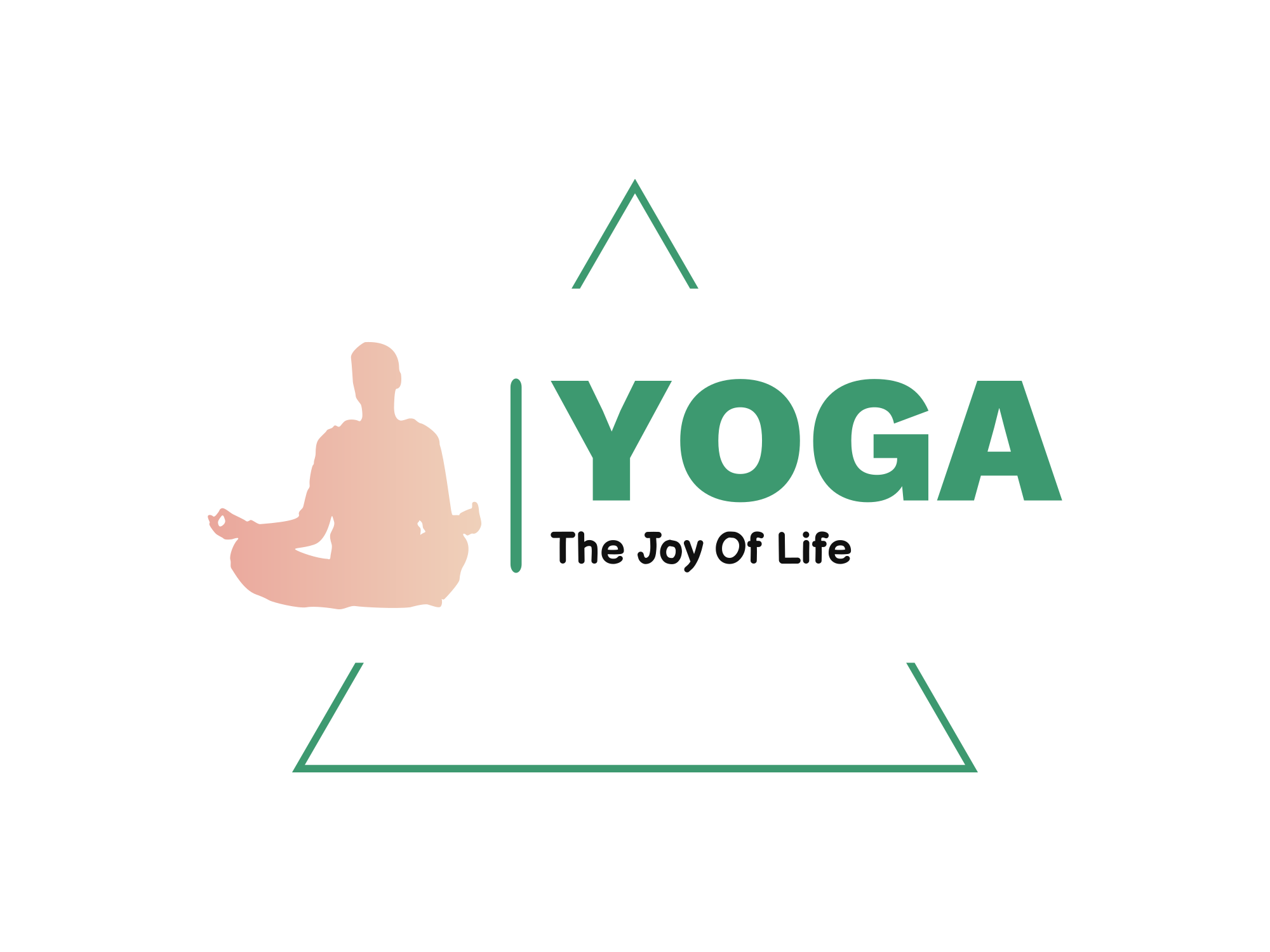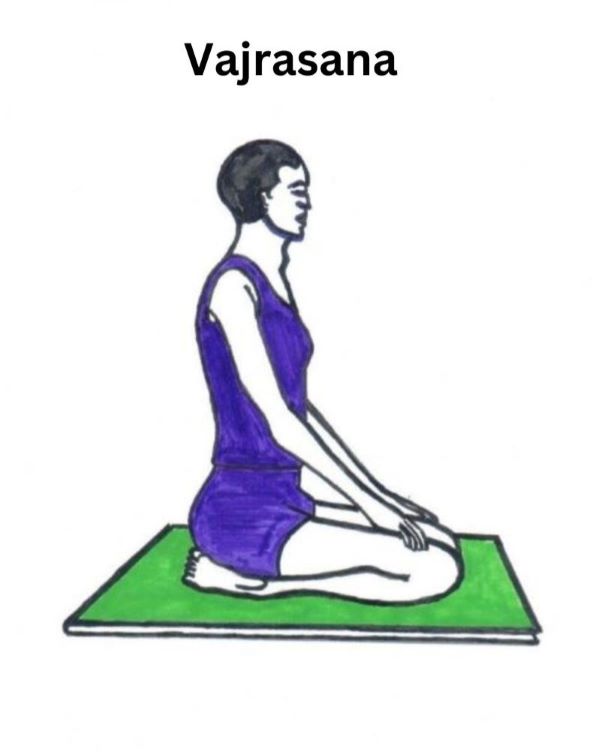1.Introduction- The asana is named Vajrasana because of its effect like a thunderbolt in the pelvis. Vajrasana is achieved by tightening both the thighs like a thunderbolt and placing both feet on either side of the anus. This asana gives success to yogis in yog sadhana.
Table of Content –
1.Introduction.
2.How to do Vajrasana.
3.Timing in Vajrasan.
4.Benefits of Vajrasana.
5.Scientific Benefits of Vajrasana.
6.When to do Vajrasana.
7.Precautions while doing Vajrasana.
2.How to do Vajrasana – Sit straight, both legs in front, heel, and toes together, both hands beside, palms on the ground, neck straight eyes in front.
– Holding the toe of the right foot with the fingers of the right hand, rotating it from the straight side, and keeping it under the right buttock in such a way that the sole is turned upwards.
– Holding the thumb of the left foot with the fingers of the left hand, rotating it from the left side, and keeping it under the left buttock in such a way that the sole should be towards the sky.
– The fingers of the soles of both the feet become almost face to face, the heels of both the feet become on the side of the buttocks, the shape of the ankles and fingers of the feet becomes like the letter U, and the buttocks are placed between the gap of the U.
3.Timing in Vajrasana- Practice this asana as much as possible. Practice this for at least 5 minutes, especially after meals to speed up digestion. If you have any digestive disease, then before and after meals, sit in Vajra Asana and practice abdominal breathing while counting breaths to 100. This practice of Vajrasana has also been considered a stable posture and meditation practice. Here a question may arise that in the simpler ones, the legs are spread and the knees remain apart, but Vajrasana is the only exercise in which the knees remain together. Why? When We do other exercises in which the knees remain spread, then in that state the thighs do not remain tight, they remain loose. In this asana, the flow of life force is of a different type. Life force always emanates from the ends of the body. Asana or Mudra Bandh, whatever we practice, its purpose is to stop the release of Prana Shakti and draw the Prana back inside the body. In normal asan whether be it Siddhasana, Sukhasana, or Muktasana, In the open position of the legs, the life force keeps flowing from one leg to the other, because both are in touch with each other. Vajrasana has been ranked as a high practice of yoga and the talk about hardening of the thighs is only to understand the position of Vajra Asana that when there is stress on the thighs, their muscles become tense, and hard. In this exercise the area of the thighs becomes tight.
4.Benefits of Vajrasana – Practicing this asana has a great effect on the Vajra Nadi. This Nadi is an important energy flow path that carries nerve impulses of the reproductive and urinary excretion systems from the brain to other parts of the body. By practicing Vajra Asana, the seeker’s sexual emotions come under his control and his energy starts getting oriented towards the development of consciousness.
There is a tradition in India that when a Saint or Mahatma comes, his feet are washed, but there are some provinces like Maharashtra, South Indian states, etc. where the entire foot is not washed, only the toe is washed. They say that the power goes out from the toe. It comes out and the one who accepts that power and receives it as Prasad is fortunate. This is a symbol that the effect of pure sacred power comes from the toes of the feet. In this asana, the toes remain connected due to which the Pranic Shakti gets reunited with each other, it becomes a circuit and that is done with one foot. On the other hand, it enters inside due to which the area of the sole of the feet becomes full of life force. The same power then affects the Muladhar area, helping in the awakening of the Muladhar Chakra.
5.Scientific Benefits of Vajrasana – From a scientific point of view, it can be said that the nerves passing through the front and side of the foot are related to our reproductive organs and digestive system. When there is stimulation due to pressure in those nerves, it affects our digestive system and reproductive organs. It prevents stomach diseases like hyperacidity and peptic ulcers and increases the efficiency of the entire digestive system. The conditions of the sex glands in the lower part of the body are affected by this practice. This is an excellent practice for practicing celibacy. This asana is also considered very important for intensifying the digestion process. This should be practiced after meals.
Vajrasana brings changes in blood flow and nerve impulses in the pelvic region and strengthens the muscles of the pelvic region. It is a preventive treatment method for hernia disease and is also helpful in the treatment of piles. It reduces the effect of blood in the reproductive organs and massages the tantric fibers that supply blood to them, helping in the treatment of enlarged testicles and hydroceles in men. It helps treat menstrual irregularities in women. Practicing this with closed eyes and focusing on breathing brings mental peace.
This exercise is also considered useful for meditation because it supports the spine. No matter how much effort one puts into this, one cannot sit bent. In Sukhasana, in Siddhasana, the person’s body bends, but in Vajrasana, the spine remains straight naturally and no hard work is required. This is the best easy meditation for people suffering from sciatica and sacral infection. Prana flows smoothly in this. This asana is also practiced for the awakening of Sushmana in Kundalini Yoga, that is why Maharishi Gherand says that by doing this asana, the yogi achieves Siddhi.
6.When to do Vajrasana-
In the position of asana, the blood flow in the feet is less, due to which all the blood reaches the abdominal region, and sexual glands, which strengthens the digestive system. The sex glands regain their lost functionality.
Vajrasana is the only asana that can be done while having food and also after having food.
It is a meditative posture. By keeping the spine straight in this posture, the Kundalini Shakti located in the navel chakra gets awakened and enters the Sushumna. It is easy to meditate while sitting in this asana.
7.Precautions while doing Vajrasana-
If you experience pain in the thighs, then in this asana, separate the knees a little. Beginners start feeling pain in the ankles after sitting in Vajrasana for a while. To get rid of this, spread the legs in front and shake them up and down until the stiffness in the legs goes away. Again, to make the sitting posture comfortable in Vajrasana, you can place a folded blanket or pillow between the buttocks and ankles.
If there is pain in the joints of the feet and knees, then this asana should not be done.
The spine should remain straight.
Come back sitting as much as you can and take a rest in Dandasan.

